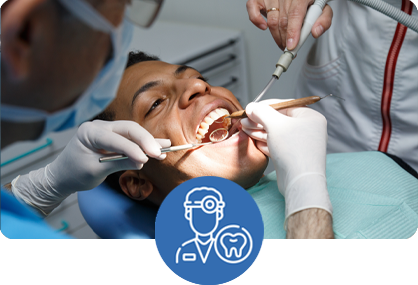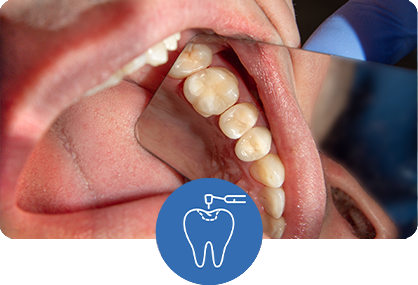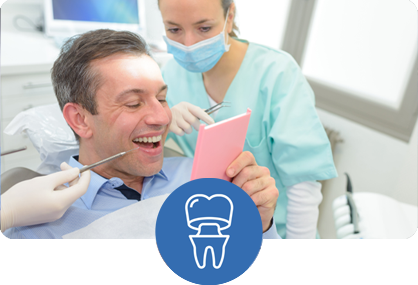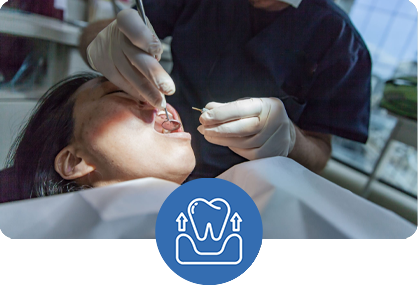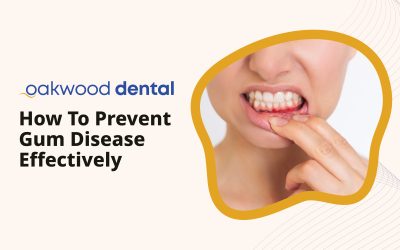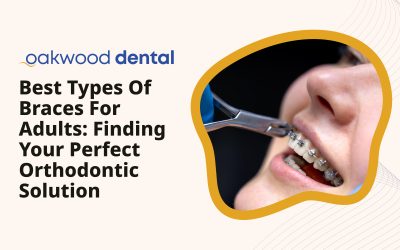A bright, white smile is more than just looking good—it’s also linked to good health and proper oral hygiene. Tooth discoloration happens naturally as we age, from eating certain foods, and from habits like smoking. But with good care, you can keep your teeth whiter longer. People with brighter smiles are often seen as more trustworthy and approachable in both social and work settings. Studies have shown that individuals with white teeth are perceived as more successful, friendly, and even younger than their actual age. Your smile is often the first thing people notice about you, making it a crucial element of your overall appearance and self-confidence.
Key Takeaways
- The first 48 hours after whitening are most crucial for maintaining results
- Maintain good oral hygiene with proper brushing and flossing techniques
- Avoid dark-colored foods and beverages that can stain teeth
- Use straws when drinking potentially staining beverages
- Regular dental check-ups are essential for maintaining white teeth
- Professional whitening treatments offer longer-lasting results
- Whitening toothpastes help remove surface stains but cannot change natural tooth color
- Tobacco use significantly accelerates tooth discoloration
- Seasonal changes require adjustments to your dental care routine
- Staying properly hydrated helps maintain tooth whiteness naturally
Understanding the Importance of White Teeth
Regular dental care is the foundation of maintaining white teeth. Routine dental care includes professional cleanings and check-ups that help remove surface stains and catch problems early. Dental experts can guide you on the best ways to keep your smile white based on your specific needs.
White teeth are not just about vanity—they often indicate healthy teeth and gums. The enamel, which is the outer protective layer of your teeth, naturally appears white when it’s healthy and intact. Understanding the relationship between oral health and tooth color helps you make better decisions about your dental care routine.
There are two main types of tooth discoloration that affect the appearance of your smile:
- Extrinsic stains: These surface stains are caused by external factors like coffee, tea, wine, tobacco, and certain foods. They’re generally easier to remove with professional cleanings and whitening treatments.
- Intrinsic stains: These develop from within the tooth structure and can be caused by certain medications, excessive fluoride during childhood, trauma, or natural aging. They often require more intensive whitening treatments or cosmetic procedures.
- Age-related discoloration: As you age, enamel naturally thins, allowing the yellowish dentin underneath to show through. This type combines both extrinsic and intrinsic factors.
Knowing which type of staining you have helps determine the most effective treatment approach. Your dentist can examine your teeth and tell if your stains are just on the surface (which can be polished away) or deeper inside your teeth (which might need more serious treatments). This professional assessment is crucial for setting realistic expectations and choosing the right whitening strategy.
Daily Oral Hygiene Practices for Whiter Teeth
Keeping white teeth starts with good daily habits that protect your enamel and prevent staining. The foundation of any whitening maintenance plan is a consistent oral hygiene routine. By following proper techniques and using the right tools, you can significantly extend the life of your whitening results.
Essential brushing techniques include:
- Brush twice daily for two minutes: Use a soft-bristled toothbrush with gentle, circular motions. Divide your mouth into four sections and spend 30 seconds on each to ensure thorough cleaning.
- Hold brush at 45-degree angle: Position your toothbrush toward your gum line to effectively remove plaque and food particles from where your teeth meet your gums. This area is particularly prone to staining and decay.
- Replace toothbrush regularly: Change your toothbrush every three to four months, or sooner if bristles become worn. Worn bristles are less effective at cleaning and can damage your gums.
- Consider electric toothbrushes: Studies show they remove more plaque and surface stains than manual brushing. Many come with built-in timers to ensure you brush for the full two minutes.
- Use whitening toothpaste strategically: Whitening toothpaste can help maintain whiteness, but use it no more than twice weekly, alternating with regular fluoride toothpaste to avoid enamel wear.
Flossing daily is just as important as brushing because it removes food and plaque from between teeth where your toothbrush can’t reach. This helps prevent stains from building up in these tight spaces. Many people neglect flossing, but it’s essential for maintaining both white teeth and overall oral health.
Additional daily care practices to consider:
- Use antibacterial mouthwash: Helps reduce plaque-causing bacteria that contribute to surface staining. Choose clear or white mouthwashes rather than colored varieties that may cause staining.
- Rinse with water after meals: When you can’t brush immediately, swishing with plain water helps wash away food particles and reduce staining compounds.
- Look for ADA Seal of Acceptance: This ensures products have been tested for safety and effectiveness, protecting your enamel while cleaning your teeth.
These daily habits form the cornerstone of maintaining white teeth. Consistency is more important than intensity—gentle, regular care beats aggressive, sporadic cleaning. By making these practices part of your routine, you create a strong foundation for long-lasting whiteness.
Foods and Beverages That Stain Teeth
What you eat and drink plays a major role in the color of your teeth. Some foods and drinks contain strong pigments called chromogens that stick to your enamel, while others have tannins that help these pigments attach more effectively. Understanding which foods pose the greatest staining risk allows you to make informed choices and take preventive measures.
Common foods and beverages that stain teeth include:
- Coffee and tea: Both contain tannins that create yellowish or brownish discoloration. The cumulative effect of daily consumption leads to significant staining over time.
- Red wine: Contains both chromogens (pigmented molecules) and tannins, making it a double threat for tooth staining. White wine is acidic and can also make teeth more susceptible to staining from other sources.
- Dark sodas and cola: Contain color additives and are highly acidic, which softens enamel and makes it more vulnerable to staining.
- Berries: Blueberries, blackberries, cherries, and pomegranates have intense pigments that can stain teeth despite their health benefits.
- Dark sauces: Soy sauce, tomato sauce, balsamic vinegar, and barbecue sauce all have deep colors that adhere to tooth enamel.
- Curry and turmeric: These spices contain strong pigments that can cause yellowing, especially with frequent consumption.
To reduce staining from these foods and beverages, use a straw when drinking dark liquids, rinse your mouth with water afterward, and be extra careful about what you eat and drink during summer gatherings to maintain a white smile during summer. The timing of consumption matters—eating staining foods during meals rather than sipping throughout the day limits exposure time.
Fortunately, some foods actually help keep teeth white:
- Crunchy fruits and vegetables: Apples, celery, and carrots act like natural toothbrushes, scrubbing away surface stains and stimulating saliva production.
- Dairy products: Cheese, milk, and yogurt provide calcium that strengthens enamel. Cheese also increases saliva production, which neutralizes acids and washes away food particles.
- Strawberries: Despite being red, they contain malic acid, which may help remove surface stains when eaten fresh.
- Water: The ultimate tooth-friendly beverage that rinses away food particles and keeps your mouth hydrated for optimal saliva production.
If you consume something that stains, try to brush within 30-60 minutes afterward. However, wait at least 30 minutes if you’ve consumed acidic foods or drinks, as brushing immediately can damage temporarily softened enamel. Ending a meal with water or a piece of cheese provides additional protection against staining.
Professional Teeth Whitening Options
For significant improvements in tooth color, professional teeth whitening treatments offer safe and effective solutions. These treatments are especially good for stubborn stains that don’t respond to over-the-counter products. Professional supervision ensures optimal results while minimizing side effects like sensitivity.
In-office teeth whitening provides immediate, dramatic results in a single appointment:
- High-concentration whitening agents: Professional treatments use 25-40% hydrogen peroxide compared to 3-10% in over-the-counter products, delivering results that at-home methods simply cannot match.
- Light-activated technology: Special lights or lasers activate and accelerate the whitening process, breaking down stains more effectively and reducing treatment time.
- Protective measures: Dentists apply protective gel or rubber shields to your gums, preventing irritation from the stronger whitening agents.
- Customized treatment: The procedure is tailored to your specific needs, with adjustments made based on your tooth sensitivity and desired results.
- Immediate results: Most patients see their teeth become 3-8 shades whiter in just 60-90 minutes.
The in-office procedure begins with a thorough cleaning to remove surface debris, followed by careful application of the whitening gel. The gel is left on for specific intervals and may be reapplied several times during the session. The controlled environment ensures maximum safety and effectiveness.
Take-home professional whitening kits offer another effective option:
- Custom-fitted trays: Your dentist creates trays that perfectly match your teeth, ensuring even coverage and preventing gel from irritating your gums.
- Professional-grade products: These kits use 10-20% hydrogen peroxide or carbamide peroxide—stronger than over-the-counter options but gentler than in-office treatments.
- Flexible treatment schedule: Wear the trays for a specified period each day, usually for one to two weeks, gradually achieving your desired whiteness.
- More affordable option: Take-home kits cost less than in-office treatments while still delivering professional-quality results.
- Touch-up convenience: Keep your custom trays for future touch-ups, requiring only replacement gel rather than new appointments.
Both professional options provide superior results compared to over-the-counter products. Your dentist can help you choose between immediate in-office results or the convenience and flexibility of take-home kits based on your budget, schedule, and whitening goals.
At-Home Whitening Methods and Their Effectiveness
If you prefer to whiten your teeth at home, several options are available with varying levels of effectiveness. Understanding how well they work and their limitations helps you avoid disappointment or damage to your teeth. When used correctly, at-home whitening products can provide noticeable improvements and help maintain results from professional treatments.
Popular at-home whitening methods include:
- Whitening toothpastes: Contain mild abrasives like silica or calcium carbonate plus low concentrations of hydrogen peroxide. They remove surface stains but cannot change natural tooth color. Understanding whitening toothpaste effectiveness helps set realistic expectations. Use no more than twice weekly, alternating with regular fluoride toothpaste.
- Whitening strips: Thin, flexible plastic strips coated with peroxide-based gel. Applied for 30 minutes once or twice daily for 1-2 weeks. More effective than toothpaste because gel stays in contact with teeth longer, but may not conform perfectly to all tooth shapes.
- Over-the-counter whitening trays: Use one-size-fits-all approach that’s less effective than custom trays. Generic trays may leak gel onto gums or fail to hold gel in proper contact with all teeth.
- LED whitening devices: Popular home devices claiming to accelerate whitening. Scientific evidence for their effectiveness is limited—most results likely come from the gel rather than the light.
- Whitening pens: Convenient for touch-ups and on-the-go application, but contain low concentrations of whitening agents and provide minimal results compared to other methods.
Store-bought products contain much less whitening ingredient than professional options, so they take longer to work and don’t produce dramatic changes. Without dentist supervision, you might apply them incorrectly, leading to uneven whitening or increased tooth sensitivity.
Natural whitening remedies have gained popularity but come with important caveats:
- Baking soda: Mild abrasive that can remove surface stains, but overuse damages enamel. Use sparingly and only as a supplement to regular toothpaste.
- Activated charcoal: Lacks scientific evidence supporting whitening claims and may be too abrasive for safe regular use.
- Oil pulling: Swishing coconut or sesame oil may improve oral health but won’t significantly whiten teeth.
- Hydrogen peroxide rinses: Food-grade hydrogen peroxide can help with stains when used as a rinse, but should be diluted properly and not swallowed.
If you choose to try natural remedies, use them sparingly and always maintain your regular oral hygiene routine. For significant whitening results, professional treatments remain the most effective and safest option, with at-home commercial products serving as good maintenance tools.
Maintaining Results After Teeth Whitening
The first 48 hours after whitening are critically important for preserving your results. During this time, your teeth are like sponges that can quickly absorb colors from foods, drinks, and tobacco. Whitening temporarily opens tiny pores in your tooth enamel, making them much more susceptible to staining until the enamel fully hardens again.
During the first 48 hours, follow the “white diet” carefully:
- Avoid all staining foods and beverages: No coffee, tea, red wine, colored sodas, berries, tomato sauce, soy sauce, or any dark foods and drinks. If it would stain a white shirt, avoid it.
- Stick to white or clear foods: White fish, chicken, rice, pasta with white sauces, white cheese, bananas, plain yogurt, cauliflower, and clear broths are safe choices.
- Drink only water or milk: These are the safest beverages during this critical period. Even clear sodas should be avoided due to their acidity.
- Eliminate tobacco completely: Smoking or chewing tobacco can quickly discolor freshly whitened teeth and significantly reduce treatment effectiveness.
- Avoid strongly colored spices: Turmeric, curry, paprika, and similar spices can cause staining even without obvious color in the final dish.
After the first 48 hours, you can gradually reintroduce other foods, but maintaining whitening results requires ongoing care. Continue being mindful of staining foods and beverages—you don’t need to avoid them completely, just take precautions like using straws, rinsing with water afterward, or brushing within an hour of consumption.
Long-term maintenance strategies include:
- Touch-up treatments: Depending on your habits, you may need touch-ups every few months to once or twice a year. Professional touch-ups are quicker and less expensive than initial treatments.
- Use whitening toothpaste periodically: Helps remove surface stains between professional treatments, extending the life of your results.
- Regular dental cleanings: Professional cleanings every 3-6 months remove surface stains and tartar that regular brushing cannot eliminate.
- Stay hydrated: Drinking water throughout the day helps wash away staining compounds and supports healthy saliva production.
Keep in mind that whitening results aren’t permanent. On average, professional whitening lasts 1-3 years, while at-home treatments may last 6 months to 2 years. People who regularly consume staining foods and beverages or use tobacco will see results fade more quickly.
The Role of Lifestyle in Teeth Whiteness
Your everyday choices significantly affect how white your teeth stay over time. Research shows that certain habits can cause teeth to yellow much faster than natural aging alone. The cumulative effect of daily choices means small, consistent habits have a major impact on your smile’s appearance.
Major lifestyle factors affecting tooth color include:
- Tobacco use: One of the biggest causes of tooth discoloration. Nicotine and tar quickly turn teeth yellow or brown. Even e-cigarettes and vaping products with nicotine cause yellowing, though typically less than traditional tobacco. Heavy smokers may develop stains so deep they require extensive professional whitening or cosmetic dental work.
- Hydration levels: Drinking 8+ glasses of water daily helps wash away food particles and dilute staining compounds. Saliva, which is 99% water, is your mouth’s natural defense against staining. Dehydration reduces saliva production, making teeth more vulnerable to discoloration.
- Diet quality: High-sugar and acidic diets weaken enamel, increasing staining susceptibility. Foods rich in calcium and phosphorus (dairy, nuts, leafy greens) strengthen enamel and maintain natural whiteness.
- Stress and teeth grinding: Chronic stress may lead to bruxism, which wears down enamel and makes teeth appear more yellow. Consider a night guard if you grind your teeth.
Certain medications can also affect tooth color. Some antihistamines, antipsychotics, and blood pressure medications cause dry mouth, increasing staining risk. Tetracycline antibiotics taken during childhood can cause intrinsic staining that persists into adulthood. If medications concern you, discuss alternatives with your healthcare provider.
Positive lifestyle habits that support tooth whiteness include:
- Eating crunchy fruits and vegetables: Stimulate saliva production and mechanically clean teeth as you chew, naturally removing surface debris.
- Limiting alcohol consumption: Alcohol causes dry mouth, reducing your natural defenses against staining. Many alcoholic beverages also contain chromogens that stain teeth.
- Using a humidifier at night: Prevents dry mouth during sleep, maintaining healthy saliva levels that protect against staining.
- Regular exercise: Promotes overall health including good circulation to gums, supporting oral health and tooth appearance.
Making conscious lifestyle choices supporting oral health creates a foundation for maintaining white teeth. Quitting tobacco, staying hydrated, eating a balanced diet, and managing stress all contribute to a brighter smile that lasts longer.
Seasonal Care for White Teeth
Different seasons present unique challenges for maintaining white teeth. Temperature changes, humidity variations, and seasonal foods all affect your oral health and tooth appearance. Being aware of these seasonal factors allows you to adjust your oral care routine proactively.
Summer presents specific challenges for white teeth:
- Increased consumption of staining foods: Berries, popsicles, colorful drinks, and barbecue sauces are summer staples that can stain teeth.
- Dehydration risk: Hot weather and physical activity cause dry mouth, reducing saliva that naturally cleans teeth. Stay hydrated by drinking water regularly throughout the day.
- Acidic summer beverages: Lemonade, sports drinks, and citrus waters soften enamel, making teeth more susceptible to staining.
- Disrupted routines: Vacations and outdoor activities can interrupt regular brushing and flossing habits. Carry a travel-sized dental kit for on-the-go care.
- Chlorine exposure: Frequent swimming in chlorinated pools affects oral pH balance. Rinse your mouth with fresh water after swimming.
Plan ahead for summer by packing travel oral care products and setting reminders to maintain your routine even when away from home. The increased sun exposure can lead to faster dehydration, so make conscious efforts to drink water regularly, especially during outdoor activities.
Winter brings its own set of challenges:
- Dry air effects: Cold outdoor air combined with indoor heating causes significant mouth dryness, reducing natural defenses against staining. Use a humidifier in your bedroom to combat this.
- Holiday indulgences: Halloween candy, Thanksgiving pies, Christmas cookies, and New Year’s champagne pose staining risks. Hot chocolate, mulled wine, and dark desserts are particularly problematic.
- Reduced water intake: People tend to drink less water in cold weather, compounding dehydration issues.
- Postponed dental appointments: Many people delay checkups due to weather or busy holiday schedules, but maintaining your cleaning schedule is essential.
Pay extra attention to oral hygiene during holiday seasons when consuming more sweets and staining foods than usual. Don’t neglect regular dental checkups in winter—schedule your professional cleaning in early fall to prepare for the holidays.
Spring and fall offer optimal conditions for preventive care:
- Ideal times for professional treatments: Schedule cleanings and whitening treatments during these transitional seasons.
- Spring allergy considerations: Allergies can cause mouth breathing and dry mouth. Use sugar-free lozenges or increase water intake to compensate.
- Fall preparation: Establish good habits before the holiday season begins. A professional cleaning in early fall removes summer staining and prepares your smile for upcoming celebrations.
Adjusting your dental care routine seasonally helps maintain consistent whiteness year-round. Being proactive about seasonal challenges is more effective than addressing problems after they develop.
Addressing Common Teeth Whitening Concerns
Many people have concerns about teeth whitening, particularly regarding sensitivity, effectiveness, and safety. Modern whitening products have improved significantly, incorporating ingredients that reduce side effects and target stains more precisely. Understanding these common concerns helps you make informed decisions and know what to expect.
Common concerns about tooth sensitivity:
- Why it happens: Whitening agents penetrate enamel and reach the dentin layer where nerve endings are located. Temporary opening of tiny tubules exposes nerves, causing sensitivity to temperature and certain foods.
- How long it lasts: Sensitivity typically resolves within 24-48 hours after treatment. In most cases, it’s mild and manageable.
- Managing sensitivity: Use toothpaste for sensitive teeth before and after whitening, follow product instructions carefully, and try shorter treatments with longer breaks between sessions.
- Desensitizing options: Dentists can provide special desensitizing products to apply before treatment if you have naturally sensitive teeth.
Research shows that when used correctly, approved whitening products don’t harm tooth enamel. The active ingredients work by breaking down stain molecules through oxidation, not by damaging tooth structure. However, overuse or misuse can cause problems, so always follow product instructions and consult with your dentist about appropriate frequency.
Concerns about uneven whitening results:
- Existing dental work: Crowns, veneers, and fillings won’t respond to whitening treatments and will remain their original color, potentially creating a mismatch with newly whitened natural teeth.
- Intrinsic stains: Stains from medications or trauma may not respond as well to whitening treatments as extrinsic stains.
- Varying tooth responses: Different teeth may whiten at different rates due to variations in enamel thickness or porosity.
- White spots becoming more visible: Areas of hypocalcification (less mineralized enamel) become more noticeable after whitening but often blend in over time as teeth remineralize.
If you have visible dental restorations, discuss timing with your dentist. You may need to replace them after whitening to match your new tooth color. Most dentists recommend waiting 2-4 weeks after whitening before replacing restorations to allow your natural tooth color to stabilize.
Safety considerations include:
- Pregnancy and breastfeeding: Most dental professionals recommend postponing elective cosmetic procedures like whitening until after this period to minimize unnecessary chemical exposure.
- Age restrictions: Professional whitening is typically not recommended for children under 16, as the pulp chamber is enlarged until this age, increasing sensitivity risk.
- Gum health requirements: Whitening should only be performed on healthy teeth and gums. Treat any cavities or gum disease before whitening.
- Realistic expectations: Understand that whitening can only lighten your natural tooth color by several shades—it cannot create unnaturally bright “Hollywood white” teeth or work on artificial dental materials.
Discussing these concerns with your dentist before beginning treatment helps set realistic expectations and ensures you choose the safest, most effective whitening approach for your situation. Professional guidance is especially important if you have dental restorations, sensitive teeth, or underlying oral health conditions.
Conclusion: Creating a Personalized White Teeth Maintenance Plan
Keeping white teeth requires a personalized approach based on your specific dental situation, lifestyle habits, and aesthetic goals. What works perfectly for one person may not be ideal for another, which is why customization is essential. By combining professional advice with consistent home care, you can enjoy a brighter smile that lasts for years.
Start by consulting with a dental professional to assess your current dental health and discuss your whitening goals. Your dentist can identify your specific type of discoloration, evaluate existing dental work that won’t change color with whitening, and recommend the best options for your situation. Be honest about your lifestyle habits, including consumption of staining foods and beverages, tobacco use, and your ability to maintain strict oral hygiene routines.
Your personalized maintenance plan should include these key components:
- Professional care schedule: Professional cleanings every 3-6 months to remove surface stains and tartar. Plan for whitening touch-ups annually or semi-annually depending on your habits and goals.
- Daily home care routine: Brush twice daily for two minutes, floss once daily, and use appropriate whitening products as recommended by your dentist.
- Dietary adjustments: Be mindful of staining foods and beverages, use straws when appropriate, and rinse with water after consuming potentially staining items.
- Lifestyle modifications: Stay hydrated, avoid tobacco, manage stress, and address teeth grinding if applicable.
- Seasonal adaptations: Adjust your routine based on seasonal challenges, being extra vigilant during summer vacations and winter holidays.
- Touch-up strategy: Keep whitening products at home for periodic touch-ups between professional treatments.
Track your progress by keeping photo records of your smile to monitor changes over time. If you notice your teeth yellowing faster than expected, evaluate your habits and make small adjustments before problems require intensive treatments. Be patient with the process—tooth whitening is not a one-time solution but an ongoing commitment to maintaining your smile.
Remember that consistency is key when it comes to maintaining white teeth. By following these tips and working closely with your dental care provider, you can enjoy the benefits of a bright, white smile for years to come. Your smile is an investment in your appearance, confidence, and overall health. With the right knowledge, tools, and habits, maintaining a white smile becomes a natural part of your daily routine rather than a burdensome task.

 718-979-2121
718-979-2121